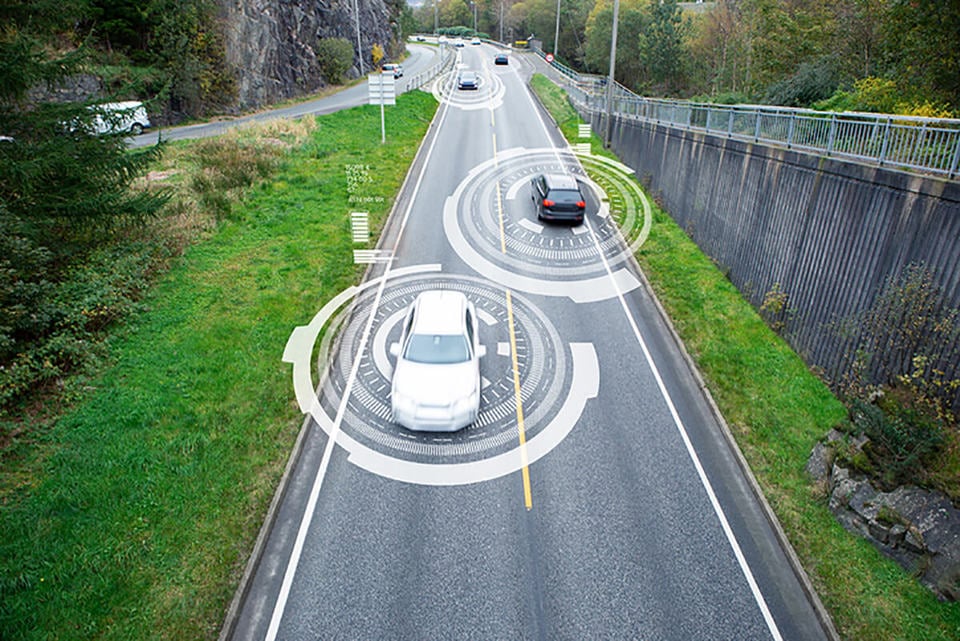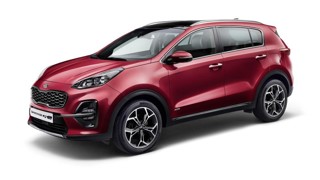High-tech safety features, which the European Commission (EC) wants to see fitted as standard on cars and vans, could add hundreds of pounds to list prices. However, road safety experts say it is a price worth paying to reduce the number of people killed and serious injured.
In all, 11 advanced safety technologies, including autonomous emergency braking (AEB), built-in breathalysers and intelligent speed assist, could be mandated on all models launched from 2020, and all new vehicles sold two years later.
One road safety expert said, taken together, the package of measures could be considered as significant as the invention of the seatbelt.
However, others have warned that fitting the latest safety features as standard will come at a price. For example, intelligent speed assistance, which uses a sign-recognition camera and a GPS-linked speed limit database to help drivers keep to the current speed limit, is an optional extra on the new Mercedes-Benz E-Class, coming as part of a safety pack costing £1,695.
It is not available at all on the Golf SE, but lane-keep assist – another technology being mandated by the Commission – is, and currently costs £550.
AEB meanwhile, is becoming a standard feature on an increasing number of vehicles, including the E-Class and the Golf, but it is part of safety pack costing £400 on Ford’s Fiesta.
Martin Ward, manufacturer relationship manager at vehicle pricing experts Cap HPI, said: “If you take something like Audi Driver Assist, which includes some of these safety features , that costs £1,250.
“I would guess that could come down to £600-£ 700 in time, which on something that costs £40,000 isn’t so much, but for a budget car it would be much more significant.”
When you take all the measures proposed by the Commission, Ward estimates it could increase the list price of some vehicles by as much as £1,000. “It will hit the budget end of the market harder and will also affect benefit-in-kind rates for company car drivers as well,” he said.
For its part, the EC argues that there should be “no substantial” increases in vehicle prices in the “medium- or long-term”.
However, it does acknowledge that the anticipated cost to manufacturers would amount to more than £50 billion.
Service, maintenance and repair (SMR) costs could also be impacted due to the complex nature of some advanced road safety systems.
SAFETY IS PRICE WORTH PAYING
Standard-fit AEB is practically a prerequisite for achieving the highest, five-star Euro NCAP safety rating, but safety expert Matthew Avery says some manufacturers are content with being awarded a lower rating.
Avery, director of research at vehicle safety technology company Thatcham Research, told Fleet News: “Some low-cost vehicle will say ‘we won’t go for five stars, we will be just happy with three stars’, while some mainstream manufacturers might just put it on as standard on the top models, because they want to remain competitive.
“We’ve heard that argument for years. We’ve had AEB since 2008; there’s no excuse. It’s a price worth paying and I would argue that on the economies of scale, that’s a false argument.”
AEB has been included in the Euro NCAP testing regime since 2014, which has helped to drive its adoption by carmakers. It is now available on more than half (53.1%) of new cars, with a quarter featuring the technology as standard, according to the Society of Motor Manufacturers and Traders (SMMT).
However, in the UK only 30% of cars on sale have AEB as fitted as standard, as the technology is mostly offered as an optional extra.
More worryingly, says Thatcham, is only one (Land Rover), out of the top 10 best-selling UK car brands in 2017, had 100% fitment across its entire model range. Significantly, the top two car brands (Ford and Vauxhall) had only 7% and 14% fitment across their entire car range.
Experts believe that AEB has the potential to save 1,100 lives and more than 120,000 casualties in the UK over the next 10 years, with research showing that cars fitted with the technology have a 38% reduction in rear-end crashes.
Avery said: “Just as seatbelts are a legal requirement on all cars and vans, AEB should be as well.”
Alongside AEB, built-in breathalysers, lane-keep assist and intelligent speed assist, the Commission also wants new cars and vans to be equipped as standard with driver drowsiness and attention detection systems and reversing sensors. All, it says, will be based on technologies that will be used for the deployment of self-driving and connected vehicles anyway.
ZERO FATALITIES BY 2050
The road safety measures, which also include accident data recorders being fitted as standard to new cars and vans, are part of series of initiatives laid out in the EC’s ‘Third Mobility Package’.
They include CO2 standards for trucks, rules on multi-vehicle platoons and an action plan for the development and manufacturing of batteries for electric vehicles (EVs) in Europe.
A key ambition of the EU is achieving zero fatalities and serious injuries by 2050, its Vision Zero strategy. The road safety measures it has proposed, it says, could halve the number of people that are currently killed or seriously injured in the EU between 2020 and 2030. Some 25,300 people were killed last year.
The European Automobile Manufacturers’ Association (ACEA) welcomed the road safety proposals, but warned vehicle technology could not deliver the reduction alone.
“Vehicle technology is just one piece of the complex safety puzzle,” said ACEA secretary-general, Erik Jonnaert.
“If we are to make progress on the Commission’s new objective of reducing fatalities and serious injuries by half between 2020 and 2030, we need to put more emphasis on an integrated road safety strategy. This is the only way to ensure that safe vehicles are driven by safe drivers on safe roads.”
The EU is not currently on track to hit its 2050 target as, despite some falls across Europe, the decline in road deaths has stagnated in many countries, including the UK.
As of September 2017, 1,720 people had died on UK roads in the previous 12 months, according to the latest figures available from the Department for Transport (DfT).
In 2016, the number of road deaths stood at 1,792, which was up 4% year-on-year and the highest annual total since 2011. Yet, the UK together with the Netherlands and Finland has some of the safest roads in Europe, reporting a rate of around 30 deaths per million population.
Those with the most dangerous include Bulgaria, Romania and Poland, where road deaths rates exceed 80 per million population.
“We still seem to accept road collisions and deaths as a price we have to pay,” said Antonio Avenoso, executive director of the European Transport Safety Council (ETSC).
Six out of 10 deaths in the workplace are from road collisions and, according to the latest ETSC figures, up to 40% of road deaths are work-related.
Avenoso described the package of road safety measures as a “big step forward” for road safety in Europe. “It can be as revolutionary as the invention of the seatbelt,” he said.
The road safety package will now need to be approved by 28 member states and the European Parliament before becoming law.
Avery said: “We would hope that no blockers are put in the way by carmakers or parliamentarians around making these technologies mandatory on all UK cars and vans as soon as possible.”
He concluded: “The UK has really been quite good at driving general safety regulations. But more recently, we’ve taken our foot off the gas.”





















Gordy - 04/06/2018 13:36
Don't forget the manufacturers have already developed these systems and so the R&D is paid for. They are also not stupid so they took out patents on them too. They are fitted to a fraction of the production fleet at the moment. This means if they are mandated on all vehicles the price will plummet and all manufacturers would profit having paid the initial patent fees. If the parts companies got their heads together like the computer manufacturers do, then standard size and production issue units would slash costs further. You must be very careful when writing these articles that you are not inadvertently helping manufacturers push their prices up without real justification. People will choose cars for a number of reasons but safety equipment should not be a choice item. For example, how many manufacturers only install one rear fog light ? COME ON, REALLY?! It would probably be cheaper nowadays to produce cars with 2 rear fog lights so they were the same light unit across the world. Thankfully gone are the days when you had to tick the options boxes on cars including the Ford Fiesta for the nearside rear view door mirror or the rear wash wipe!